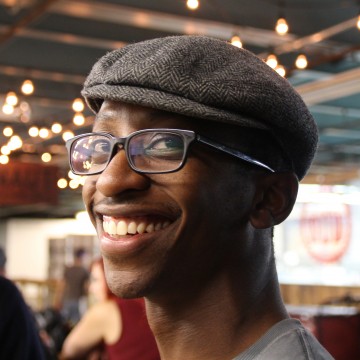Tag Archive: Social Change
April 26, 2017
The human heart is the first home of democracy. It is where we embrace our questions. Can we be equitable? Can we be generous? Can we listen with our whole beings, not just our minds, and offer our attention rather than our opinions? And do we have enough resolve in our hearts to act courageously, relentlessly, without giving up – ever – trusting our fellow citizens to join with us in our determined pursuit of a living democracy? ~Terry Tempest Williams
In Turkey, voters just granted the Prime Minister additional powers. In the US, many people have long been fond of simple solutions. Today that plays out with support of a bombast who is inconsistent and offers solutions that exacerbate underlying problems.
When we work with clients, it also seems like there is a pull to simplicity, especially around issues of diversity and equity.
We field many calls from organizations and networks eager to address issues of racism. In its caricature state, which is all too common, the request is for a two-hour workshop for staff. The hope is that with a few hours of filling smart brains with a new understanding—of the history of racism, or of implicit bias, or levels of oppression—that then things will be okay.
This is false. A two-hour workshop can open some new understanding or potentially be used to make a case for change, but in no way does not even put you on the road to okay.
How is it that smart people believe that a little more in the way of “smarts” will undo a complex historical reality routed in policy, cultural narrative and economics?
Some of it seems to be a wish for easy and for ease. Many white people want the magic bullet or the easy solution to our own racism and that of our country and our organizations. We are not used to acknowledging that it took a lot of work to dig the hole that we are in and that it will take even more work to get out. Hoping that two hours or one day can give a diverse group the knowledge, tools, and understanding to create systemic change is simply a wish for simple.
In addition, there are systems that support the quest for this to be simple. For example, funders may offer relatively small dollars for organizational change efforts or not prioritize learning about systems of oppression at all. The push is almost always for fast outcomes and it seems risky to slow down and support the harder efforts that will ultimately be successful. Many leaders of our organizations, foundations, and government institutions have ourselves benefitted from the structures of racism and are content (wittingly or unwittingly) not to rock the boat.
For people working on systemic change, our job is to communicate that change is both hard and worthy. To want change requires more than a workshop; it is a commitment to put in the time, the dollars, and the effort. We know that effective equity efforts require work on multiple levels.
It may not be easy but it is fun and powerful to see the changes along the way. Change can beget more change. Change includes:
- New and deep relationships that expand what is possible and build new ways of being
- More equitable hiring and purchasing policies, investing in long term economic change
- Policies in an organization that are constructed to undo the bias that is both implicit and explicit in our minds and our organizations.
I will write more in the coming weeks about examples of change as a motivation for those moments when we think oppression, racism, and inequity are solvable in a two-hour workshop. IISC is interested in working with groups that choose to avoid the simple and invest with their hearts and time the work that can lead to meaningful change.
January 6, 2017

I along with some other colleagues was recently approached by a networks researcher and thought leader about any emerging lessons and what we perceive to be current gaps in the “networks for social change” field around knowledge and practice. We were also invited to share any blog posts that speak to these lessons and growing edges. Below is the gist of the response that I sent, and I am curious to hear any reactions, extensions, etc.
Below are links to three blog posts that I would say speak to the growing edges in my own thinking and what I am seeing as important considerations for the field going forward. To summarize, these all have to do with how to get at deeper systemic change purpose and potential (which is not always the presenting purpose or initially perceived potential when networks form), and related to that, surfacing and working with issues of power, privilege and identity.
Read More
September 13, 2016
Think like a network, act like a node.
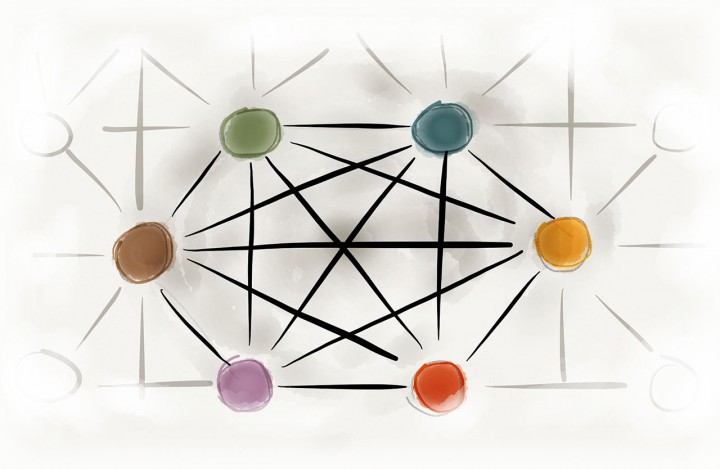 At IISC, we continue to emphasize that networks, not organizations, are the unit of social change. Part of the reason for this is that networks at their best are able to leverage what are known as “network effects.” These effects, as described by Madeleine Taylor and Peter Plastrik, include the following:
At IISC, we continue to emphasize that networks, not organizations, are the unit of social change. Part of the reason for this is that networks at their best are able to leverage what are known as “network effects.” These effects, as described by Madeleine Taylor and Peter Plastrik, include the following:
Rapid Growth and Diffusion
Through its myriad nodes and links, as well as the ongoing addition of participants and new pathways, a dense and intricate network can expand quickly and broadly. This can be critical for spreading information and other resources and mobilizing actors in ways that organizations simply cannot achieve.
Read More
August 23, 2016
“Processes aimed at racial equity change can overlook the privileged side of inequity.”
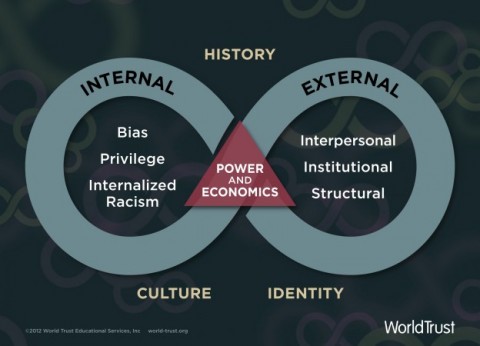
In numerous social change networks that we support at IISC, racial equity has been put at the center of the work, whether or not that was the initial impetus for coming together. This is not seen as ancillary to the change effort, but now understood as foundational, in that systemic inequity around race is part and parcel of the water in which we swim. In a few of these networks where there is a majority of white participants, increasing numbers of people are asking what they can do about structural racism, and one response is that there is important work to be done around whiteness and white privilege. As Gita Gulati-Partee and Maggie Potapchuk point out, this is often a critical missing link in racial equity work. Read More
August 9, 2016
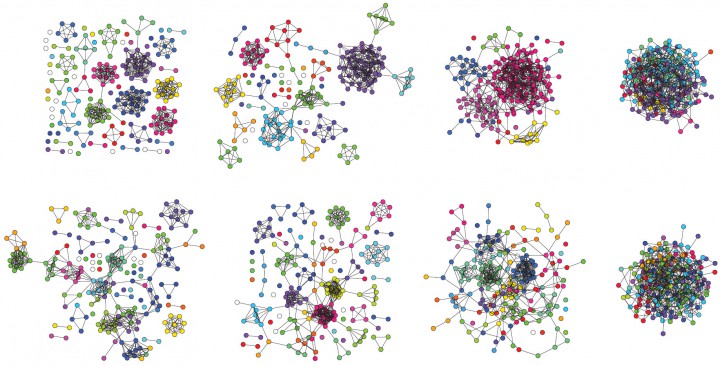
Social change networks are complex, compared with other human organizational forms; they are not so easily controlled, directed or predicted. And that is as it should be, especially when dealing with real life diversity and uncertainty. This can cause some anxiety on the part of those who would like to be able to better control for outcome and process and may not be very comfortable with emergence and self-organization. But these are the life blood of complex networks, part of their intelligence and effectiveness, even as people may struggle to wrap their heads around the full picture of what is happening. That’s the way life works.
That said, experience suggests that there is an important effort to be made and role to be played in tracking (even if imperfectly and incompletely) the unfolding story of a social change network over time. This is especially important for those in pursuit of hard evidence of effectiveness and/or some kind of guarantee that there is return on one’s investment of time and other resources. I have noted previously and continue to be struck by the fact that seeing signs of network impact can indeed be difficult, perhaps because of a kind of conditioning around what constitutes “action” and “success.” Furthermore, the pace of life can cut against an appreciation for what is moving right before one’s eyes in fairly nuanced and perhaps more measured ways. Read More
May 3, 2016

Image by Tracy Kelly
Part of the underlying and deeper change potential of taking a network approach is the notion that we lead with contribution before credential. This means being open to the idea, for example, that a 15-year-old high schooler or home schooler might have as much to offer a given conversation as someone with a PhD, that lived experience can be as valuable if not more so than formal education, that those on the so-called “margins” often have a clearer view of what’s going on than those who sit at the center.
Read More
April 21, 2016
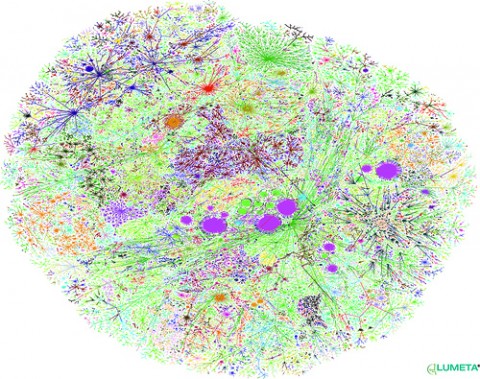
Image by Steve Jurvetson
Much of the work we do at IISC includes some element of helping to develop networks for social change. This entails working with diverse groups of individuals and/or organizations to come together and create a common vision and clear pathway to collective action and impact. I’ve been reflecting on how important it can be to not simply focus on creating or developing networks “out there” and across traditional boundaries, but also “in here,” within different recognized borders.
“When a living system is suffering from ill health, the remedy is found by connecting with more of itself.”
– Francisco Varela
The notion that part of the process of healing living systems entails connecting them to more of themselves is derived, in part, from the work of Francisco Varela, the Chilean biologist, philosopher and neuroscientist. As Varela and others have surmised, living systems are networks, including individual people, groups, organizations, and larger social systems. Furthermore, they have noted that when a living system is faltering, the solution will likely be discovered from within it if more and better connections are created. In other words, as Margaret Wheatley puts it,
“A failing system [or network] needs to start talking to itself, especially to those it didn’t know were even part of itself.”
I find it interesting in the context of social change work to consider how the process of re-connecting at and within different systemic levels can be beneficial to those levels and initiatives as wholes.
Read More
February 24, 2016
“Network entrepreneurs are keenly aware that they are few among many working across the larger system, and in this way they embody a special type of … leader[ship].”
– Jane Wei-Skillern, David Ehrlichman, & David Sawyer

Image from Taro Taylor – https://www.flickr.com/photos/tjt195/30916171
The concept of leadership has been undergoing an evolution. In this “network age” there appears to be both an expanding appreciation that leadership has always been about more than the singular heroic individual, and that going forward, leadership really must be much more of a shared endeavor.
In our collaborative consulting work at IISC, leadership (or what we often call Facilitative Leadership) is about “holding the whole,” thinking expansively about the state of a given complex system (community, economy, ecosystem, etc.) and paying attention to what will be required to ensure resiliency and/or change for more equitable and sustainable benefit. In these situations, the traditional top-down images of leadership fall far short.
Network leadership is at best a dynamic, diverse, more decentralized and multi-dimensional phenomenon. Many of those with whom we partner at IISC understand this implicitly, and we have found it important to help them be more explicit about this by clearly delineating the roles that leadership can embody in a collaborative/networked change endeavor. Read More
February 22, 2016
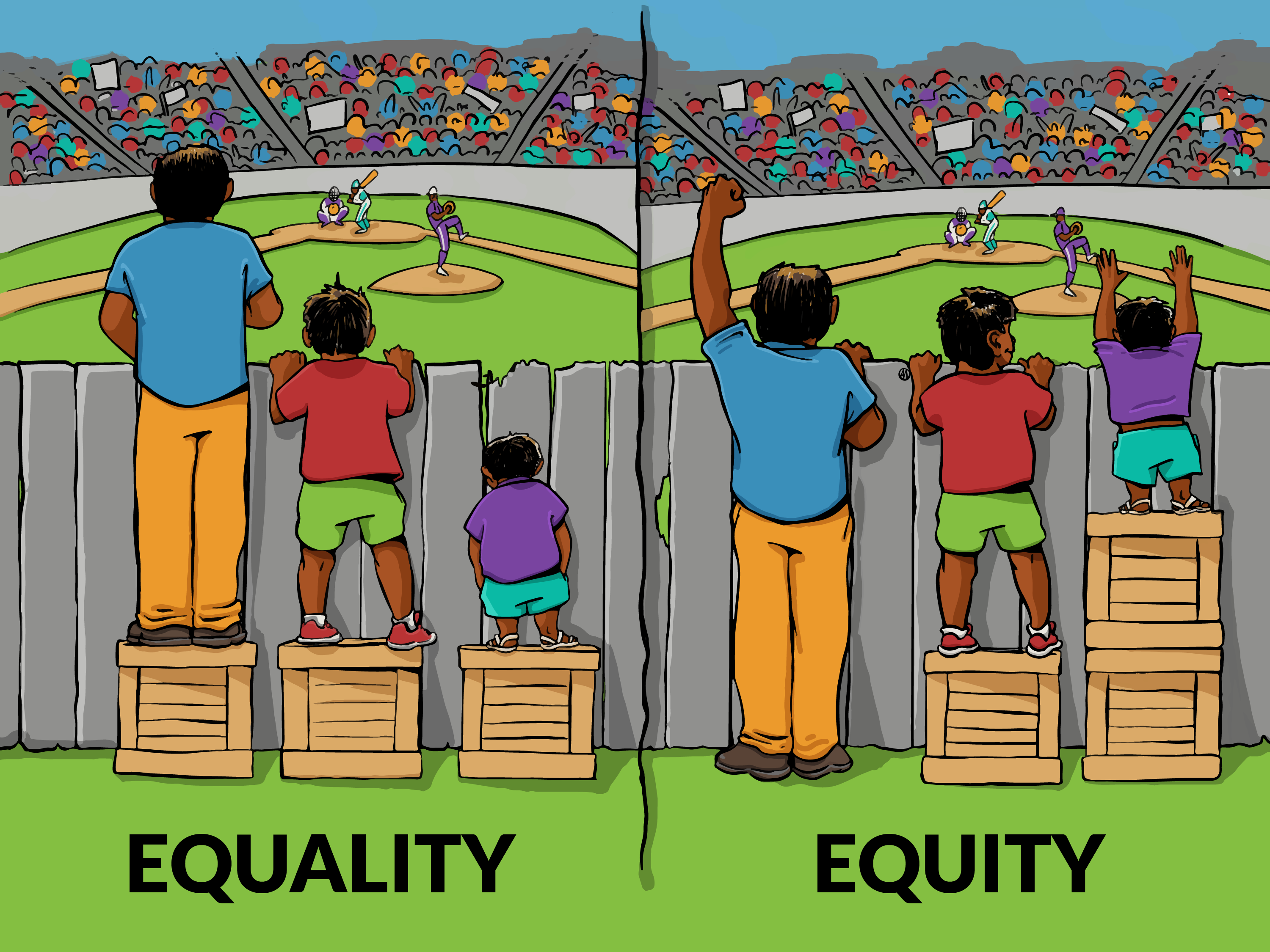
ATTENTION FRIENDS! Can you use the equality vs equity illustration in your book/video/presentation/etc?
Yes! You do not need written permission to reproduce the work. Read below for information on the license under which the illustrations are released.
In late 2015, Danielle and I collaborated with our friend and colleague, Angus Maguire, to produce the above adaptation of an old favorite (original blog post here). In the wake of the virality of the graphic on our social media channels, the three of us wanted to share a little of what we’ve been thinking since we released it into the wilds of the Internet a little over a month ago. – Lawrence
Lawrence: In all honesty, frustration was a primary driver of my interest in this project. I have seen this graphic in 15+ presentations and yet every time it seemed to be more pixelated than the last. I wanted our practitioners (and the world) to have a higher quality tool.
Angus: Collaborating with IISC on this little project was great. It wasn’t a complex project brief: essentially we set out to improve on the presentation of an internet classic. For me, it started as a great chance to experiment with a new illustration workflow – this is the first time I’ve done a cartoon like this digitally, start-to-finish. Software and hardware tools are now at a point where that’s possible for me, and I’m just getting started on the possibilities for experimentation and iteration.
Danielle: This image is popular because it creates an opening for more conversation. What works about it is that there are multiple points of entry. For the person who has never thought about equality or equity, they can see there is a difference, and begin to shift their thinking. Read More
February 9, 2016
“Long term prosperity is primarily a function of healthy human webs.”
– Sally J. Goerner

Over the past several years of supporting self-declared “networks” for social change, we at IISC have been constantly evolving our understanding of what is new and different when we call something a network, versus say a coalition, collaborative or alliance. On the surface, much can look the same, and one might also say that coalitions, collaboratives and alliances are simply different forms of networks. Yes, and . . . we believe that what can make a big difference is when participants in a network (or an organization, for that matter) embrace new ways of seeing, thinking, and doing. So let us propose here that network approaches at their best call on people to lead with some of the following:
January 20, 2016
How focusing on diversity, flow and structure in human networks can be a foundation for great change.
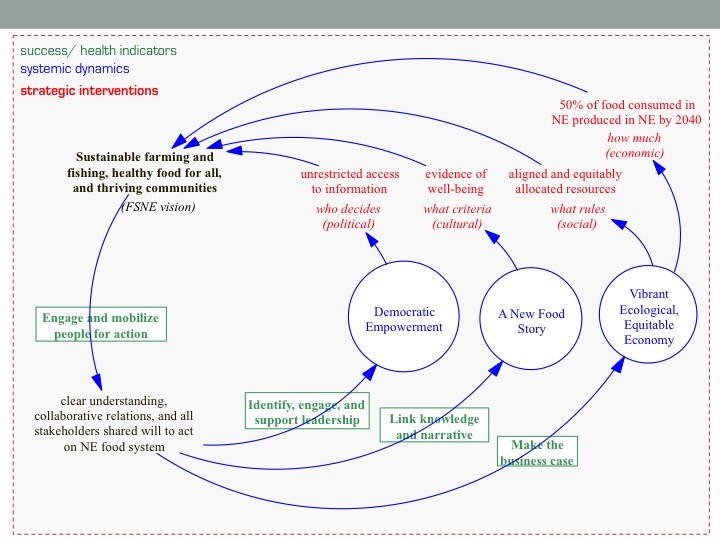
Over the past couple of years, we at IISC have partnered with a few different social change initiatives that have engaged in system mapping to both align diverse stakeholders and surface leverage points for collective intervention. In looking back at these different mapping processes, it is striking the similarities of the areas of focus that have been identified, despite the variety of issues being addressed (food system fragility to educational disparities to public and environmental health). Across these efforts, common areas of leverage have surfaced around:
October 6, 2015
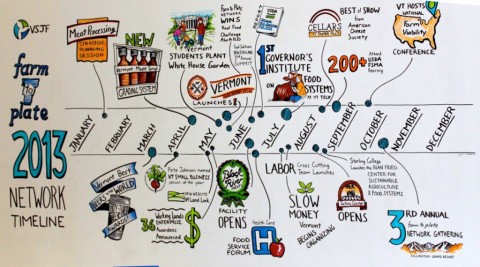
A recent report out of the University of Michigan and Michigan State University highlights a number of food systems change efforts that have adopted a collective impact approach. Two of these are initiatives that IISC supports – Food Solutions New England and Vermont Farm to Plate Network. The report distills common and helpful lessons across eight state-wide and regional efforts. Here I want to summarize and elaborate on some of the article’s core points, which I believe have applicability to virtually all collaborative networks for social change. Read More


 At IISC, we continue to emphasize that
At IISC, we continue to emphasize that 






